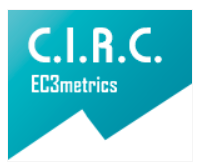Classification Of The Risk Level For Functional Errors Of Swallowing (CRAF)
Clasificación Del Nivel De Riesgo Por Errores Funcionales de la Deglución (CRAF)
Main Article Content
Dysphagia is known as the difficulty or disability when it comes to eating food, which is analyzed from different points since it can be generated by anatomical factors, be they birth or acquired, psychological or functional causes. The professional work in dysphagia allows classifying the severity of dysphagia, but not the qualification of the risk of the different functional errors during ingestion. For this reason, this paper proposes to classify the level of risk due to functional swallowing errors.
The research was proposed from a prospective nature with a validity relationship, through the Delphi method, through which a list of functional swallowing errors was postulated to be validated by 6 expert judges in the area. A proposal was made in a matrix, which evaluated the different functional errors divided into the swallowing phases and the risk levels to affect dysphagia, according to the items of sufficiency, relevance, coherence and clarity. A list of 38 validated errors was obtained, which are based on risk, since when they materialize, they promote a greater probability of penetration / aspiration of food into the airway in the glutory sequence. The consensus on the classification of these errors according to risk will be a useful tool for professionals in the area. A list of risks due to functional swallowing errors is concluded through Fisher's least significant difference (LSD) for means, in descending order according to the severity of the risk represented by the error in intake.
Downloads
Publication Facts
Reviewer profiles N/A
Author statements
Indexed in
- Academic society
- Bogotá: Corporación Universitaria Iberoamericana
- Publisher
- Bogotá: Corporación Universitaria Iberoamericana
Article Details
Aguilar-Vázquez, E., Pérez-Padilla, L., Martín-López, M. de L., & Romero-Hernández, A. A. (2018). Rehabilitación de las alteraciones en la succión y deglución en recién nacidos prematuros de la unidad de cuidados intensivos neonatales. Boletín Médico Del Hospital Infantil de México, 75(1), 15–22. https://doi.org/10.24875/bmhim.m18000001 DOI: https://doi.org/10.24875/BMHIM.M18000001
Aissar Sallum, R. A., Fonseca Duarte, A., & Cecconello, I. (2012). Analytic review of dysphagia scales. Arquivos Brasileiros de Cirurgia Digestiva, 25(4), 279–282. https://doi.org/10.1590/S0102-67202012000400013 DOI: https://doi.org/10.1590/S0102-67202012000400013
American Speech-Language-Hearing Association. (2001). Model Medical Review Guidelines for Dysphagia Services. In Asha (Issue November). http://scholar.google.com/scholar?hl=en&btnG=Search&q=intitle:Model+Medical+Review+Guidelines+for+Dysphagia+Services+2004#0
Burgoa Prieto, S. (2019). Escalas de severidad de la disfagia: importancia de su uso en logopedia [Universidad de Valladolid]. http://uvadoc.uva.es/handle/10324/36904
Calleja Fernández, A., Pintor de la Maza, B., Vidal Casariego, A., Villar Taibo, R., Urioste Fondo, A., Cano Rodríguez, I., & Ballesteros Pomar, M. D. (2015). Características técnicas de los productos alimentarios específicos para el paciente con disfagia. Nutricion Hospitalaria, 32(4), 1401–1407. https://doi.org/10.3305/nh.2015.32.4.9528
Camarero González, E. (2009). Consecuencias y tratamiento de la disfagia. Nutrición Hospitalaria, 2(2), 66–78. https://www.redalyc.org/pdf/3092/309226754007.pdf
Cámpora, H., & Falduti, A. (2012). Evaluación y tratamiento de las alteraciones de la deglución. Revista Americana de Medicina Respiratoria, 12(3), 98–107.
Chen, Z., Li, G., & Liu, J. (2020). Autonomic dysfunction in Parkinson’s disease: Implications for pathophysiology, diagnosis, and treatment. Neurobiology of Disease, 134, 1–18. https://doi.org/10.1016/j.nbd.2019.104700 DOI: https://doi.org/10.1016/j.nbd.2019.104700
Chuhuaicura, P., Álvarez, G., Lezcano, M., Arias, A., Dias, F., & Fuentes, R. (2018). Patrones de Deglución y Metodología de Evaluación. Una Revisión de la Literatura Swallowing Patterns and Evaluation Methodology. A Review of the Literature. Int. J. Odontostomat, 12(4), 388–394. https://scielo.conicyt.cl/pdf/ijodontos/v12n4/0718-381X-ijodontos-12-04-00388.pdf DOI: https://doi.org/10.4067/S0718-381X2018000400388
Crary, M. A., Carnaby Mann, G. D., & Groher, M. E. (2005). Initial psychometric assessment of a functional oral intake scale for dysphagia in stroke patients. Archives of Physical Medicine and Rehabilitation, 86, 1516–1520. https://doi.org/10.1016/j.apmr.2004.11.049 DOI: https://doi.org/10.1016/j.apmr.2004.11.049
Hernández Jaramillo, J., Rodríguez Duque, L. M., Gómez Patiño, M. C., & Sánchez Gutiérrez, M. F. (2017). Prognosis Factors of Dysphagia after Stroke: A Search and Systematic Review. Ciencias de La Salud, 15(1), 7. https://doi.org/10.12804/revistas.urosario.edu.co/revsalud/a.5371 DOI: https://doi.org/10.12804/revistas.urosario.edu.co/revsalud/a.5371
Murry, T., & Chan, K. (2018). Clinical Management of Swallowing Disorders Workbook (Fourth Edi). Plural Publishing.
Ponce, M., Garrigues, V., Ortiz, V., & Ponce, J. (2007). Swallowing disorders: A challenge for the gastroenterologist. Gastroenterologia y Hepatologia, 30(8), 487–497. https://doi.org/10.1157/13110504 DOI: https://doi.org/10.1157/13110504
Robert, D., Giovanni, A., & Zanaret, M. (2000). Fisiología de la deglución. EMC - Otorrinolaringología, 29(1), 1–15. https://doi.org/10.1016/s1632-3475(00)71974-6 DOI: https://doi.org/10.1016/S1632-3475(00)71974-6
Sasegbon, A., & Hamdy, S. (2017). The anatomy and physiology of normal and abnormal swallowing in oropharyngeal dysphagia. Neurogastroenterology and Motility, 29(11), 1–15. https://doi.org/10.1111/nmo.13100 DOI: https://doi.org/10.1111/nmo.13100
Suárez Escudero, J. C., Rueda Vallejo, Z. V., & Orozco, A. F. (2018). Disfagia y neurología: ¿una unión indefectible? Acta Neurológica Colombiana, 34(1), 92–100. https://doi.org/10.22379/24224022184 DOI: https://doi.org/10.22379/24224022184
Vargas García, M. A. (2018). Repercusiones sociales de la disfagia. Revista de Logopedia, Foniatría y Audiología, 38(2), 77–83. https://doi.org/10.1016/j.rlfa.2017.10.003 DOI: https://doi.org/10.1016/j.rlfa.2017.10.003
Vargas García, M. A. (2019). Perfil espectrográfico de la deglución normal en el adulto. Nutrición Hospitalaria, 36(2), 412–419. https://doi.org/10.20960/nh.2173 DOI: https://doi.org/10.20960/nh.2173

















